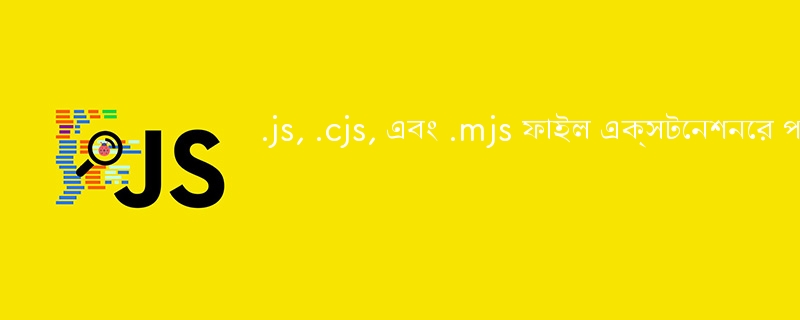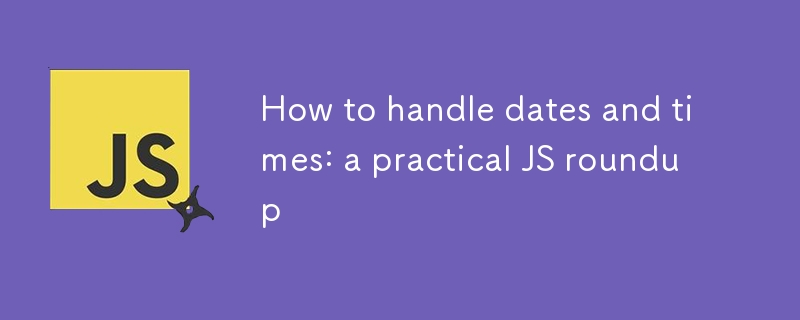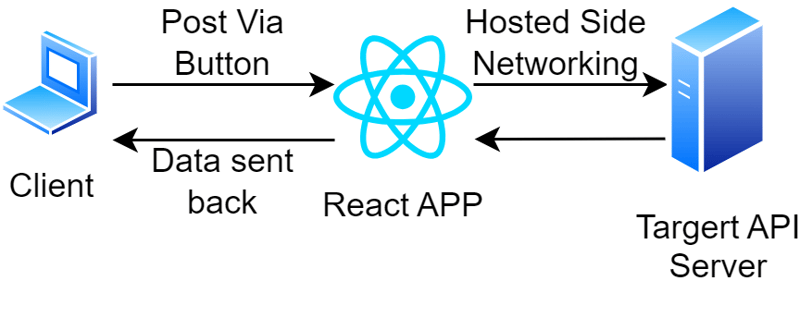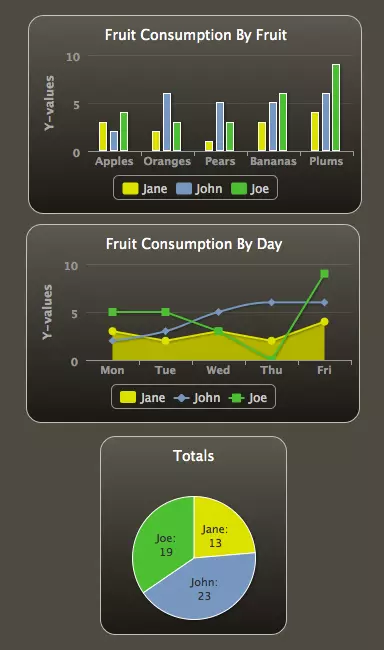Found a total of 10000 related content

A practical JS roundup for mastering regular expressions (RegEx)
Article Introduction:Regular expressions are a powerful pattern matching tool in JavaScript. They define matching rules by using /pattern/ syntax, and can be used to verify or extract information in combination with .test() or .match() methods. For example, /hello/ is used to match "hello" in a string, while adding an i flag such as /hello/i achieves case-insensitive matching. Special characters such as ., *, etc. need to be escaped with backslashes to match the literal value. At the same time, shortcut symbols such as \d (number), \w (word characters), \s (blanks) can be used. The symbols g (global search), i (ignoring case), and m (multi-line mode) can enhance matching flexibility. The matching content can be grouped and captured by brackets ().
2025-06-28
comment 0
996

The difference between .js, .cjs, and .mjs file extensions
Article Introduction:These three file extensions are used for JavaScript's module system, and each has a specific practical role:
1. .js:
Default File Format: The .js extension is the common and common format for JavaScript files.
Used according to context
2025-01-11
comment 0
957

How to handle dates and times: a practical JS roundup
Article Introduction:The following points should be noted when processing dates and time in JavaScript: 1. When creating dates, use newDate() and prioritize ISO format to avoid browser differences; 2. When obtaining and setting date components, please note that getMonth() returns 0-11, which is inconsistent with 1-31 of getDate(); 3. When formatting, you can use padStart() or use date-fns and other libraries to improve flexibility; 4. It is recommended to use Luxon, Moment-Timezone or Temporal API for more precise support. Mastering these core points can effectively deal with common problems.
2025-06-29
comment 0
924

A practical JS roundup on how to use the Fetch API for API calls
Article Introduction:TheFetchAPIinJavaScriptisabuilt-intoolformakingHTTPrequests,supportingGETandPOSTmethods,errorhandling,async/awaitsyntax,andmore.1.Usefetch()withaURLtomakeabasicGETrequest,parsetheresponsewith.json(),andhandleerrorsusing.catch().2.Manuallycheckrespons
2025-07-01
comment 0
611


Tech tips for working with people in different time zones
Article Introduction:Under the global office model, it has become the norm to collaborate with colleagues or customers in different time zones. Although this is efficient and convenient, it can also bring about communication and project management challenges. Stop calculating time around the world! This article will introduce a range of practical tools and tips to help you easily deal with the challenges of cross-time zone collaboration.
Master the global time
Knowing the local time of colleagues or clients can help you arrange meetings and projects more efficiently.
The world clock in Google Calendar
Say goodbye to the era of multiple clocks on the wall! Google Calendar web version (not yet supported on mobile) allows you to add multiple world clocks. Click the gear icon in the upper right corner, select Settings, and then check Show World Clock to display the city time of your choice on the left side of the calendar.
World clock on mobile phone
2025-02-25
comment 0
576


Using These 8 Apps Has Reduced My Waste and Now I Can't Live Without Them
Article Introduction:8 environmentally friendly apps help you easily reduce waste and start a sustainable life!
Still worrying about garbage sorting and waste reduction? don’t worry! This article recommends 8 practical apps to help you easily start a journey of sustainable life! From garbage recycling reminders to second-hand transactions, to water-saving tracking, these apps can help you effectively reduce domestic waste and contribute to environmental protection.
1. Recycle Coach: Garbage Recycling Calendar and Classification Guide
Recycle Coach is your indispensable garbage collection reminder app. It can clearly display the garbage recycling calendar in your area, including recycling time, recycling items and holiday adjustment information, and you no longer have to worry about missing garbage recycling days or classification errors! Garbage classification query is also provided in the app
2025-04-23
comment 0
1020

how to create a calendar in excel
Article Introduction:The key to making a calendar in Excel is structural arrangement and formatting. The specific steps are as follows: 1. Design the table structure, recommend horizontal arrangement of dates, write the day of the week in the first line, list the dates in each row below and mark the month title with the merged cells; 2. Use the templates provided by Excel or quickly generate dates through the "Fill" function to save manual input time; 3. Improve aesthetics and readability by adding colors, borders and using "conditional formatting" to highlight the date of the day; 4. Adjust the column width, row height and page margin before printing, and preview the effect to ensure that the paper is adapted. Master these steps to easily create a practical and clear calendar.
2025-07-12
comment 0
378

What are global html attributes?
Article Introduction:Global HTML attributes are suitable for all elements, used to change behavior or provide additional information. class is used for CSS style and JS selection; id is a unique identifier; style implements inline style; data-* stores custom data; title displays tooltips. These attributes are very practical and widely used in web development.
2025-06-30
comment 0
583

3 Useful Online JavaScript/jQuery Code Tools
Article Introduction:Practical online tools to improve JavaScript and jQuery code efficiency
This article will share some practical online JavaScript and jQuery code tools to help you process your code more efficiently.
Online jQuery code compression tool
This tool is used to compress your JS code and can choose to include the latest version of jQuery.min file, thereby improving website loading speed. Compressed code means smaller file sizes, which in turn improves website loading speed.
Online jQuery code formatting tool
This tool converts compressed code back to a readable "pretty" format, and is also suitable for obfuscated/packaged code. More readable code means faster development speeds.
Online jQuer
2025-03-01
comment 0
389

Explore Nova: JavaScript and Wasm engine Nova written in Rust
Article Introduction:Explore Nova: the next generation JavaScript and WebAssembly engine
Are you curious about how JavaScript (JS) and WebAssembly (Wasm) work? Today we'll explore an open source project called Nova, a JavaScript and WebAssembly engine written in Rust. Although Nova is still under development and not suitable for practical use, its innovative design and unique approach have attracted the attention of many technology enthusiasts.
What is Nova?
Nova is a JavaScript and WebAssembly library
2024-12-06
comment 0
925

How to add widgets to iPhone home screen
Article Introduction:To add widgets to the iPhone home screen, you must first enter the "Edit Home" mode. The method is to hold the App icon to shake it, then click the " " sign in the upper left corner of the screen to enter the widget library, select the required widget and size, then click "Add widgets", and then click "Finish Customization" at the end; common problems include installing the corresponding app first, widgets cannot be directly dragged to the negative screen, and can be reoperated when the " sign is not found; in addition, the negative screen can also be managed separately by sliding to the bottom and clicking "Edit" to improve efficiency. It is recommended to use practical components such as weather, calendar, reminder items, batteries and shortcuts to improve efficiency.
2025-07-13
comment 0
280

Essential React Native Performance Tips and Tricks
Article Introduction:A practical guide to improving the performance of React Native applications
Key Points
Balancing the animation processing of JavaScript (JS) threads and main threads to improve application performance. Use the useNativeDriver attribute and InteractionManager to manage this balance.
Avoid unnecessary component re-rendering. Tips include: memorizing components and functions, using useCallback wisely, avoiding updating local states with Redux states, and avoiding inline functions.
Optimize images to increase application speed. Use SVG icons and images, WebP image format (lossless image quality), and cache images to speed up rendering.
Using stable npm packages and Fla
2025-02-08
comment 0
397

Visualize Your Data And Speed Up Your Site With Dynamic Chart Libraries
Article Introduction:Create a data visual interface that combines aesthetics and efficiency. Designers should strive to create interfaces that are not only visually attractive, but also flexible and efficient. Data visualization should strike a balance between aesthetics and practicality.
Dynamic Chart Library provides a practical solution for data visualization, allowing real-time updates, interactivity, and significantly reducing page loading time for a smoother user experience.
There are a variety of dynamic chart libraries to choose from, each with its pros and cons, including HighCharts, PlotKit, d3.js, FusionCharts, Google Chart Tools, and Flot. These libraries range from simple, free to powerful and expensive.
Dynamic chart library can process large amounts of data and supports various charts
2025-02-27
comment 0
541

What are the most common attributes used with HTML tags?
Article Introduction:The most commonly used and practical properties in HTML development include class, id, href, src, alt, and type. class is used to share styles or behaviors, and an element can have multiple classes; id uniquely identifies a specific element, suitable for anchor links or JS acquisition objects; href is used to specify hyperlinks or stylesheet resource paths; src represents resource source paths such as pictures and scripts; alt provides image alternative text to enhance accessibility and SEO; type defines input types, button behaviors or script language types, such as text, password, submit, etc. These properties are critical to the functionality, appearance and accessibility of the page, and mastering them helps to develop a well-structured, fully functional
2025-06-30
comment 0
368

jQuery Sort Plugins 15 of the Best
Article Introduction:Fifteen practical jQuery sorting plug-ins to help you easily manage web elements!
Core points:
This article lists 15 powerful jQuery sorting plugins that can effectively control the order, location and organization of pages or table elements.
Each plug-in has unique features, ranging from simple content sorting, sortable table layout, animated table sorting to advanced search user interfaces, with rich and diverse features.
The jQuery sorting plugin is a powerful tool to improve website interactivity and user-friendliness, especially when dealing with large data sets or list views.
The sorting feature is very useful for handling large datasets such as table views and can also be used to manage list views such as portfolio pages. This article will quickly introduce 15 very convenient js
2025-02-25
comment 0
1138

How to create a button in HTML?
Article Introduction:There are two main ways to create a button in HTML: use tags or. 1. The tag is more intuitive and rich in features, and supports nested text, pictures and other HTML content, suitable for most modern web scenarios; 2. It is suitable for simple button requirements, especially common in traditional forms, but does not support nested HTML content; 3. When adding functions to buttons, it is recommended to separate logic and structure through JavaScript event listeners; 4. Button types include buttons (normal buttons), submit (submit buttons) and reset (reset buttons), and should be selected correctly according to their purpose to ensure the expected behavior. Only by selecting the tags reasonably and combining CSS styles and JS interactions can we build beautiful and practical buttons.
2025-07-08
comment 0
532

How to use the new :has() relational pseudo-class in CSS Selectors?
Article Introduction::has() is a new relational pseudo-class added by CSS, allowing the parent element to be selected based on whether the child element exists. The basic usage is parent:has(child){style}, such as p:has(img) will select the paragraph containing the image and apply the style. Practical scenarios include: 1. Automatically adjust the style, such as adding an inner margin to the div containing links; 2. Exact match, such as adding an icon to the paragraph containing external links; 3. Structural style control can be achieved without class or JS. Notes include: 1. Mainstream browsers have supported but Firefox has not been followed up yet; 2. Nested use is not supported: has(:has(...)); 3. The selector should be kept concise to avoid performance problems. Alternatives include adding class manually
2025-07-03
comment 0
146



















